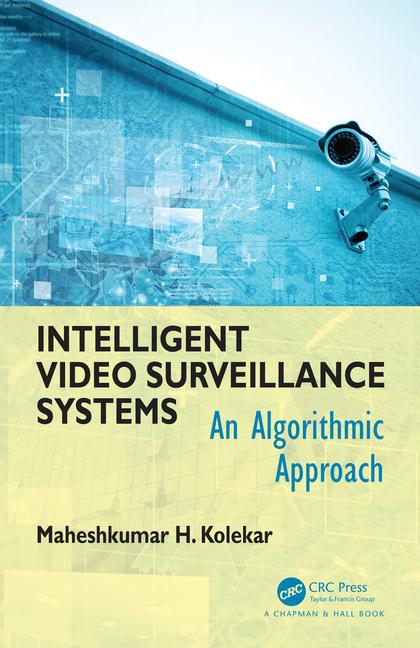Tech Trends Push Enterprise Video

The network video technology gives Public Safety the ability to review incidents occurring at any residence hall from a single, centralized security office, said Bob Wachowski.
Compiled by Bill Zalud
The growing attraction of fiber as a backbone. Megapixel IP cameras. Network video management and recording software. Advanced video analytics software as an information-driven, proactive tool. Digital pixel technology that enables ultra-wide dynamic range images.
These trends and others encourage security leaders to view video across the entire enterprise. Writing in the January issue of Security Magazine, Harold German spotlighted one such solution at Orlando’s Sanford International Airport in which enterprise-class video from Genetec provided seamless management of digital video, audio and data across an IP network.
Today, Bob Wachowski, director of public safety for DePaul University, shares enterprise-wide goals with Jim Scoppa, security coordinator, and Mike Sweeder with the Egg Harbor Township Schools.
OVER EXISTING FIBER
For Wachowski, he wanted to establish a centralized recording system that would run over the university’s existing fiber optic backbone and be easier to manage, maintain and scale up.The plan: Install fixed-dome network cameras from Axis Communications in the lobbies, hallways and exteriors of the residential buildings and replace individual DVRs with a centralized array of dedicated video storage servers and a video management system from Milestone Systems.
Though the video recordings are primarily used in forensic investigations, a dispatcher can monitor select cameras live. And in case of emergency, senior security staff can access camera views from any authorized PC attached to the campus network. “Beyond deterring crime and unruly behavior, the high image clarity and ease of video retrieval from our new system has enabled us to successfully identify perpetrators, reduce campus crime and make our students feel safer,” said Wachowski.
Because DePaul chose to stream video back to a central hub instead of putting servers out near the cameras, the integrator needed to take care that the surveillance system didn’t put undue strain on the fiber optic network. But as the university continues to grow, Wachowski plans to put smaller servers at secure sites out in the field to store the video and then stream it back to the main recording center at night when there is less demand on the network.
Eventually, Wachowski plans to gradually retire all the analog cameras at Chicago’s Lincoln Park and replace them with IP technology. Once all 60+ buildings on this campus are incorporated into the network, he will begin migrating analog technology at the Loop campus and adding that cluster of buildings to the university’s surveillance network. In addition, Wachowski is considering a wireless system that will give campus security access to video from their patrol cars. Pan/tilt/zoom network cameras are also in the plans to enable security staff to do live monitoring of high traffic areas in and around campus. These cameras will be integrated with Chicago’s 9-1-1 system so that in an emergency, Chicago police can immediately view the area in question.
BUILDING MAPS INCLUDED
When Scoppa and Sweeder decided on enterprise-wide security video, they also counted on a township neighbor, Robert Goodman of Robert Goodman and Associates, who volunteered his design expertise. Egg Harbor, with strong pupil growth, has a number of buildings across 68 acres.Goodman helped design networked video with remote access and up to 240 cameras as well as maps of the buildings that all sit on the schools’ local area network. According to Sweeder, the system has been programmed to allow appropriate non-security staff throughout the enterprise to pre-set camera tours “to cover traffic and large athletic events. We are a completely bused-in school district.” A high school was first up with more buildings to follow using Honeywell gear.
Hertz Israel also turned to advanced enterprise technology. At its operations center in Tel Aviv, it installed a comprehensive network video solution that includes intelligent cameras, encoders and command center software, powered by Pixim’s video imaging technology. This video security system continually monitors the entire perimeter surrounding Hertz’s garage, sales center and offices. It also secures sensitive indoor areas after hours, such as the main building’s entrance.
SIDEBAR: Four More Enterprise Advances
A number of technology twists now encourage others to see video as a business tool throughout the enterprise.- Video surveillance deployed in combination with advanced video analytics software becomes an information-driven, proactive tool to improve not only public safety and security, but also operational efficiency, according to Steve Graham of the Cernium Corporation. Benefits include: software-assisted monitoring, better response, acting as a force multiplier and rapid event search.
- Advances in megapixel cameras also appeal to more security leaders. Technology can also boast on board video analytics to heighten effectiveness, commented Dr. James Mihaychuk of Lumenera Corporation.
- Fiber optics is an enterprise backbone for enterprise video in government, corporate and homeland security applications. One recent advance: transmitter cards from Meridian Technologies that mount inside of the camera’s surface mount cowling and has an on-board fiber optic.
- There’s also new tech with network video management and recording software. Enterprise version software from Infinova uses an intuitive Web client and remote client to allow users to master the software.
Looking for a reprint of this article?
From high-res PDFs to custom plaques, order your copy today!







